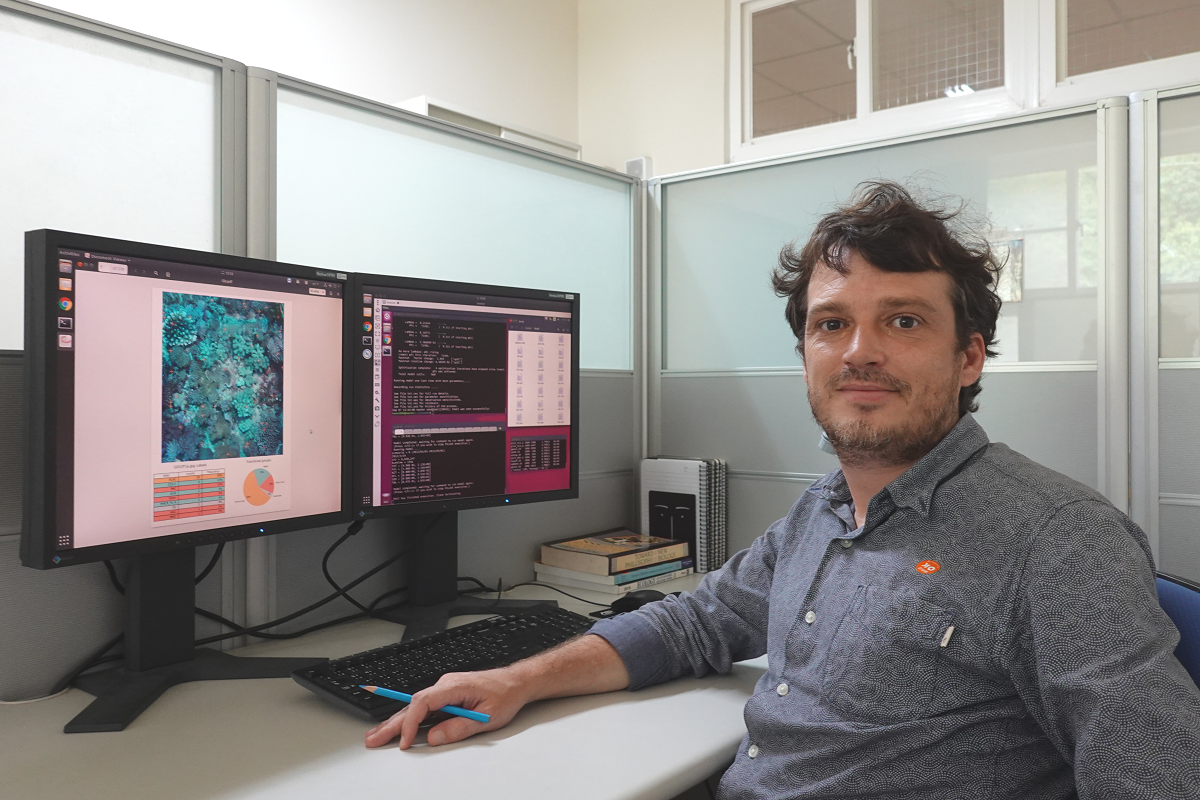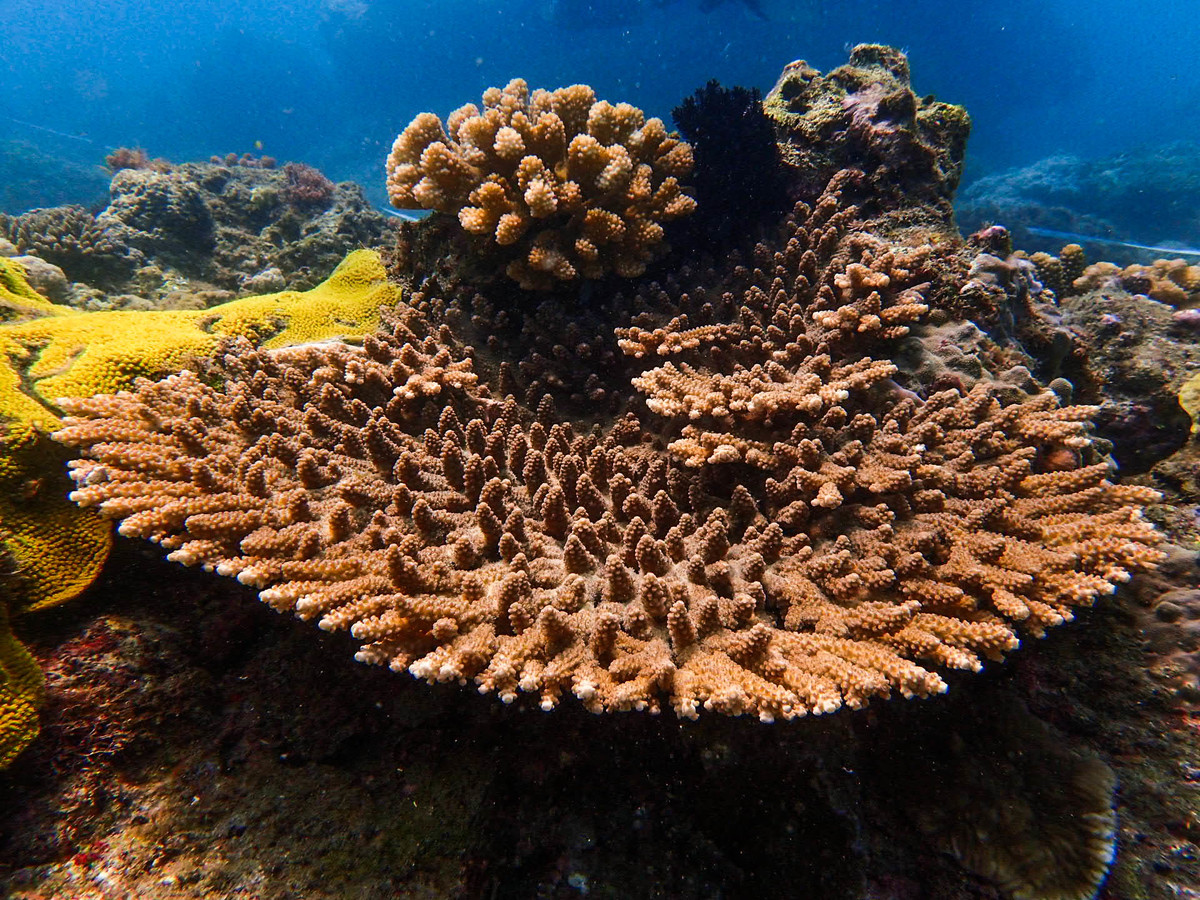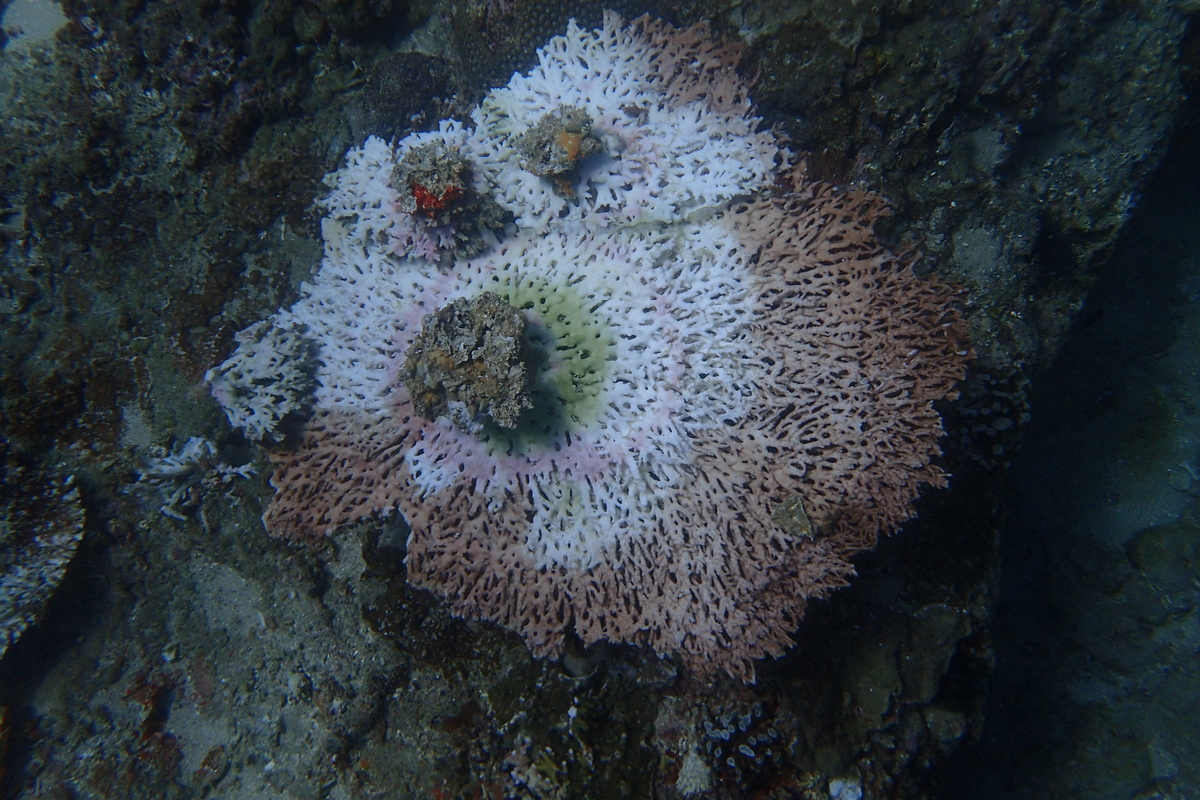Local action can increase corals’ resilience to climate change



2021-10-04
According to The World Counts, only 46% of coral reefs are left globally in a downward trend and they could be gone altogether by 2070 as a consequence of warming water temperatures, ocean acidification, overfishing, and pollution. “It’s a complex problem and we need many solutions acting together. While global warming and ocean acidification require collective global action, measures against overfishing and pollution can reduce the local regime of disturbance and promote the resilience of the reef,” says Assistant Professor Pierre-Alexandre Château of the Department of Marine Environment and Engineering, an expert in marine ecology and modeling of socio-environmental systems for sustainable development.
It is common knowledge that coral reefs are crucial for the ecosystem – they support marine life, protect coastlines from storms and erosion, are a source of food and medicines, and have recreational value. According to US National Oceanic and Atmospheric Administration, over half a billion people depend on reefs for food, income, and protection. It is hard to imagine the consequences of corals’ total disappearance.
The statistics have become alarming very recently, raising public awareness of the issue. In 2015-2016, the strong El Niño event caused seawater temperature anomalies and triggered a third global mass bleaching event, the most extensive and severe ever recorded. “People were reporting about bleaching in the world’s waters, but at that time it was not that obvious in Kenting thanks to typhoons, which have a beneficial cooling effect, despite being dangerous to species of corals vulnerable to mechanical damage.” Taiwan usually has 4.5 typhoons a year and regions along typhoon tracks may be less likely to experience widespread bleaching, he said. In 2020, because of global warming and a low incidence of typhoons, Taiwan’s reefs experienced the worst bleaching event since the government began keeping such records in the1980s, with 31% of the corals affected, according to Taipei Times. As reported by the Biodiversity Research Center, Academia Sinica, the Kenting National Park in south Taiwan did not escape last year’s disaster: about 30% of corals turned ghostly white. “If hot temperatures occur for several days in a row, it’s very dangerous to the corals: they expel the endosymbiotic algae that nourish them, turn white, starve and become vulnerable,” says Château.
Because corals compete for space with primary producers, a significant source of disturbance is excessive nutrient-rich surface water runoffs that flow from the land – a problem in southern Taiwan that intensifies during the rainy and typhoon season. “The flushing of sediments and nutrients has a strong impact on primary producers that compete with corals for ground surface to settle and grow, and can even overgrow the corals themselves,” says Château. “The soil through which waterways go should be made more permeable – absorb more water and retain sediment and so we need more parks in urban areas. Also, we need to conserve mangroves, salt marshes, and wetlands, which act as buffer zones at the edges of agricultural lands heavily enriched with chemicals and fertilizers and filtrate the water before it ends up in the sea, as well as protect the land against erosion. On the other hand, overfishing reduces populations of herbivorous fish that control the population of algae and keep them from overgrowing corals. “More control should be exerted over no-fishing areas”, says Château.
With rising water temperatures, coral species are likely to colonize cooler waters toward the poles as tropical waters become less and less suitable for them. However, “if they can’t catch up, they will disappear,” said Château. He suggested the establishment of Marine Protected Areas to favor connectivity of biodiversity-rich areas to make sure corals have a getaway from too warm waters and protect the maximum amount of wildlife. “The amount of corals is declining in the Philippines, but fortunately these species are carried northward by the Kuroshio Current to the south of Taiwan, Okinawa, and even the South Korean coast.”
To implement these measures, “we have to communicate with the people in power,” says Château. “Maybe the importance of mangroves and corals can be explained in monetary terms ”. He and his research team attempted at quantifying the benefits of reef conservation; their results suggest that, theoretically, a total value of 680 million US$ per year could be collected for conservation from visitors of Kenting National Park. “This shows how much people value corals and can serve as a reference for policymakers and managers.”
Having earned degrees in Sociology, Environmental Economics, and Marine Environment and Engineering, Assistant Professor Pierre-Alexandre Château takes on an interdisciplinary perspective to environmental protection. Appreciative of the multiple potential of new technologies, he applies Big Data and programming to ecosystem theoretical modeling to find a balance between economics, social benefits, and environmental protection for a sustainable ecosystem. He plans to share simulation results online to support citizen scientific education and influence policymakers. Also, having acquired data on reefs around Taiwan waters, Château plans to share a reef species inventory and maps online and use machine learning to provide a reef species AI recognition system.
Read more:
Ribas-Deulofeu L, Denis V, Château P, Chen CA. 2021. Impacts of heat stress and storm events on the benthic communities of Kenting National Park (Taiwan) PeerJ 9:e11744
https://doi.org/10.7717/peerj.11744
Maynard, N.; Château, P.-A.; Ribas-Deulofeu, L.; Liou, J.-L. Using Internet Surveys to Estimate Visitors’ Willingness to Pay for Coral Reef Conservation in the Kenting National Park, Taiwan. Water 2019, 11, 1411.
https://doi.org/10.3390/w11071411
According to The World Counts, only 46% of coral reefs are left globally in a downward trend and they could be gone altogether by 2070 as a consequence of warming water temperatures, ocean acidification, overfishing, and pollution. “It’s a complex problem and we need many solutions acting together. While global warming and ocean acidification require collective global action, measures against overfishing and pollution can reduce the local regime of disturbance and promote the resilience of the reef,” says Assistant Professor Pierre-Alexandre Château of the Department of Marine Environment and Engineering, an expert in marine ecology and modeling of socio-environmental systems for sustainable development.
It is common knowledge that coral reefs are crucial for the ecosystem – they support marine life, protect coastlines from storms and erosion, are a source of food and medicines, and have recreational value. According to US National Oceanic and Atmospheric Administration, over half a billion people depend on reefs for food, income, and protection. It is hard to imagine the consequences of corals’ total disappearance.
The statistics have become alarming very recently, raising public awareness of the issue. In 2015-2016, the strong El Niño event caused seawater temperature anomalies and triggered a third global mass bleaching event, the most extensive and severe ever recorded. “People were reporting about bleaching in the world’s waters, but at that time it was not that obvious in Kenting thanks to typhoons, which have a beneficial cooling effect, despite being dangerous to species of corals vulnerable to mechanical damage.” Taiwan usually has 4.5 typhoons a year and regions along typhoon tracks may be less likely to experience widespread bleaching, he said. In 2020, because of global warming and a low incidence of typhoons, Taiwan’s reefs experienced the worst bleaching event since the government began keeping such records in the1980s, with 31% of the corals affected, according to Taipei Times. As reported by the Biodiversity Research Center, Academia Sinica, the Kenting National Park in south Taiwan did not escape last year’s disaster: about 30% of corals turned ghostly white. “If hot temperatures occur for several days in a row, it’s very dangerous to the corals: they expel the endosymbiotic algae that nourish them, turn white, starve and become vulnerable,” says Château.
Because corals compete for space with primary producers, a significant source of disturbance is excessive nutrient-rich surface water runoffs that flow from the land – a problem in southern Taiwan that intensifies during the rainy and typhoon season. “The flushing of sediments and nutrients has a strong impact on primary producers that compete with corals for ground surface to settle and grow, and can even overgrow the corals themselves,” says Château. “The soil through which waterways go should be made more permeable – absorb more water and retain sediment and so we need more parks in urban areas. Also, we need to conserve mangroves, salt marshes, and wetlands, which act as buffer zones at the edges of agricultural lands heavily enriched with chemicals and fertilizers and filtrate the water before it ends up in the sea, as well as protect the land against erosion. On the other hand, overfishing reduces populations of herbivorous fish that control the population of algae and keep them from overgrowing corals. “More control should be exerted over no-fishing areas”, says Château.
With rising water temperatures, coral species are likely to colonize cooler waters toward the poles as tropical waters become less and less suitable for them. However, “if they can’t catch up, they will disappear,” said Château. He suggested the establishment of Marine Protected Areas to favor connectivity of biodiversity-rich areas to make sure corals have a getaway from too warm waters and protect the maximum amount of wildlife. “The amount of corals is declining in the Philippines, but fortunately these species are carried northward by the Kuroshio Current to the south of Taiwan, Okinawa, and even the South Korean coast.”
To implement these measures, “we have to communicate with the people in power,” says Château. “Maybe the importance of mangroves and corals can be explained in monetary terms ”. He and his research team attempted at quantifying the benefits of reef conservation; their results suggest that, theoretically, a total value of 680 million US$ per year could be collected for conservation from visitors of Kenting National Park. “This shows how much people value corals and can serve as a reference for policymakers and managers.”
Having earned degrees in Sociology, Environmental Economics, and Marine Environment and Engineering, Assistant Professor Pierre-Alexandre Château takes on an interdisciplinary perspective to environmental protection. Appreciative of the multiple potential of new technologies, he applies Big Data and programming to ecosystem theoretical modeling to find a balance between economics, social benefits, and environmental protection for a sustainable ecosystem. He plans to share simulation results online to support citizen scientific education and influence policymakers. Also, having acquired data on reefs around Taiwan waters, Château plans to share a reef species inventory and maps online and use machine learning to provide a reef species AI recognition system.
Read more:
Ribas-Deulofeu L, Denis V, Château P, Chen CA. 2021. Impacts of heat stress and storm events on the benthic communities of Kenting National Park (Taiwan) PeerJ 9:e11744
https://doi.org/10.7717/peerj.11744
Maynard, N.; Château, P.-A.; Ribas-Deulofeu, L.; Liou, J.-L. Using Internet Surveys to Estimate Visitors’ Willingness to Pay for Coral Reef Conservation in the Kenting National Park, Taiwan. Water 2019, 11, 1411.
https://doi.org/10.3390/w11071411
Click Num:
Share
